Many photographers believe that you have to spend big bucks on a telephoto lens to create stunning wildlife images. The truth is, you can create compelling wildlife images with affordable lightweight lenses like the Tamron 70-300mm f/4.5-6.3 Di III RXD.
It’s true. You don’t have to break the bank these days to get great lenses. Now, I love going on wildlife photography walks. For me, these walks are a great way to destress and reset after long, stressful weeks. I like going on them even more when I don’t have gear that weighs me down. You can walk further, walk faster, and react quicker with lenses that don’t require you to be able to bench an insane amount of weight at the gym. The Tamron 70-300mm f/4.5-6.3 Di III RXD is perfect for these walks.
The Tamron 70-300mm f/4.5-6.3 Di III RXD
.mgl-tiles { display: none; } #mgl-gallery-634ee4ccc2552 { margin: -5px; width: calc(100% + 10px); } #mgl-gallery-634ee4ccc2552 .mgl-box { padding: 5px; } @media screen and (max-width: 768px) { #mgl-gallery-634ee4ccc2552 { margin: -5px; width: calc(100% + 10px); } #mgl-gallery-634ee4ccc2552 .mgl-box { padding: 5px; } } @media screen and (max-width: 460px) { #mgl-gallery-634ee4ccc2552 { margin: -5px; width: calc(100% + 10px); } #mgl-gallery-634ee4ccc2552 .mgl-box { padding: 5px; } }
The Tamron 70-300mm is small and compact.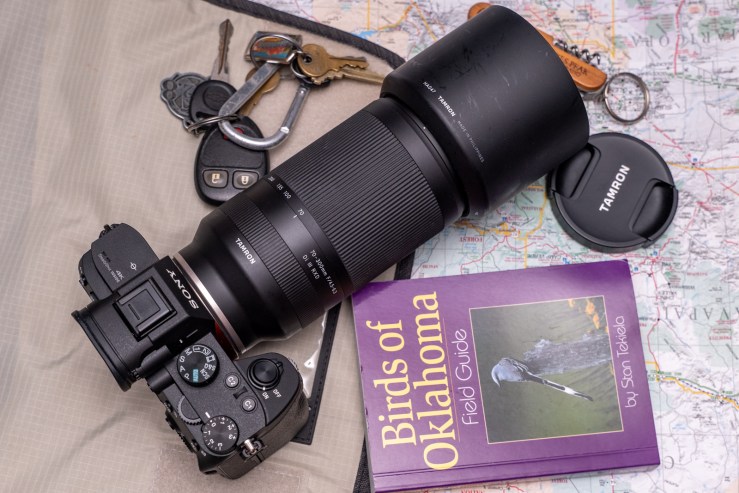
The simple design makes the Tamron 70-300mm easy to use.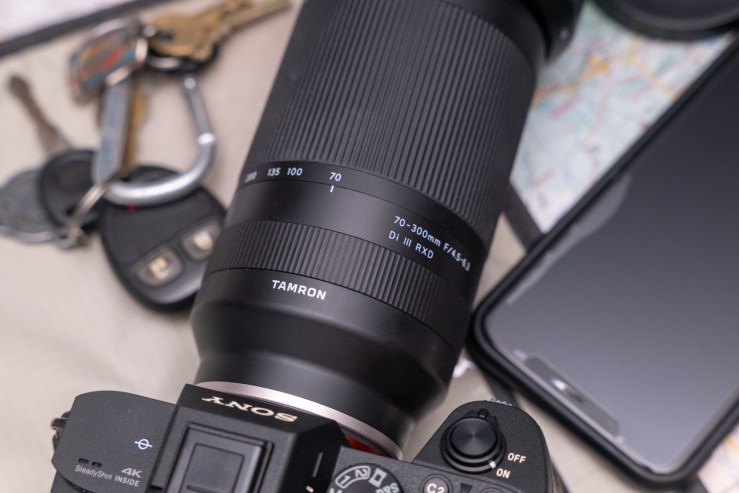
At just 1.2lbs, the Tamron 70-300mm f/4.5-6.3 Di III RXD is a joy to carry around.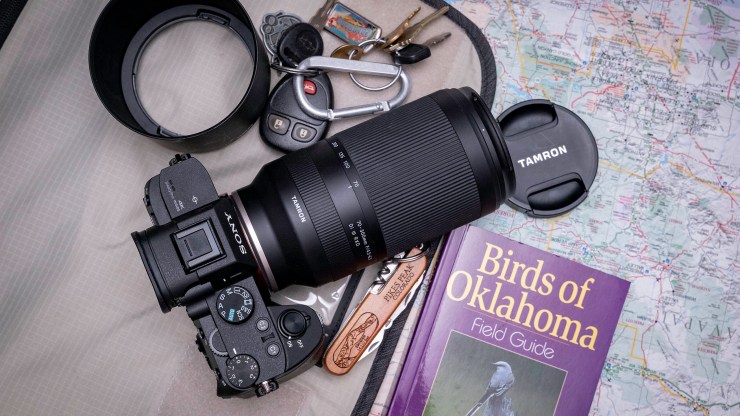
This lens uses 67mm filters which are affordable and readily available.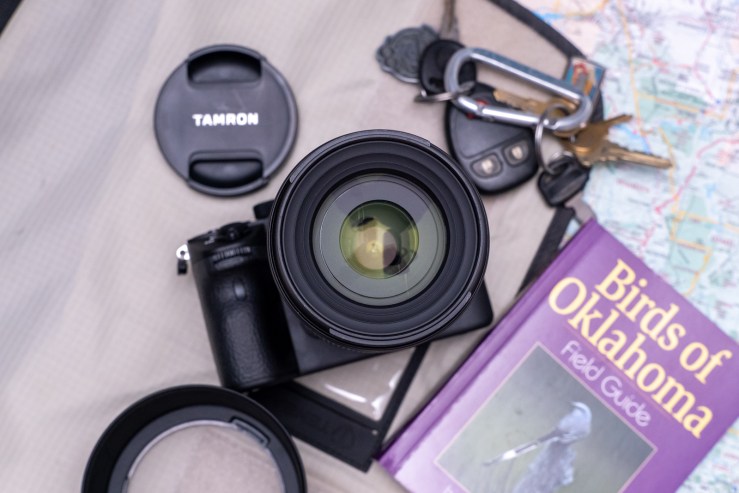
Sony E mount photographers are spoiled for choice when it comes to telephoto lenses. However, there’s one lens that not only makes wildlife photography fun but also makes it affordable too. I paired the Tamron 70-300mm f/4.5-6.3 Di III RXD with a Sony a7 III and went to a local nature reserve to create some wildlife images. This telephoto lens costs less than $550 and it weighs just 1.2lbs (545g). Here’s a look at some more specs:
- Focal length: 70-300mm
- Maximum aperture: f/4.5-6.3
- Optical construction: 15 elements in 10 groups
- Aperture blades: 7
- Minimum object distance: 0.8m (31.5 in) (wide) / 1.5m (59.1 in) (tele)
- Filter size: φ67mm
- Available for: Sony E mount
Wildlife images — it’s all about the light
.mgl-tiles { display: none; } #mgl-gallery-634ee4ccc396f { margin: -5px; width: calc(100% + 10px); } #mgl-gallery-634ee4ccc396f .mgl-box { padding: 5px; } @media screen and (max-width: 768px) { #mgl-gallery-634ee4ccc396f { margin: -5px; width: calc(100% + 10px); } #mgl-gallery-634ee4ccc396f .mgl-box { padding: 5px; } } @media screen and (max-width: 460px) { #mgl-gallery-634ee4ccc396f { margin: -5px; width: calc(100% + 10px); } #mgl-gallery-634ee4ccc396f .mgl-box { padding: 5px; } }
Early morning or late evening light is the best for wildlife photography.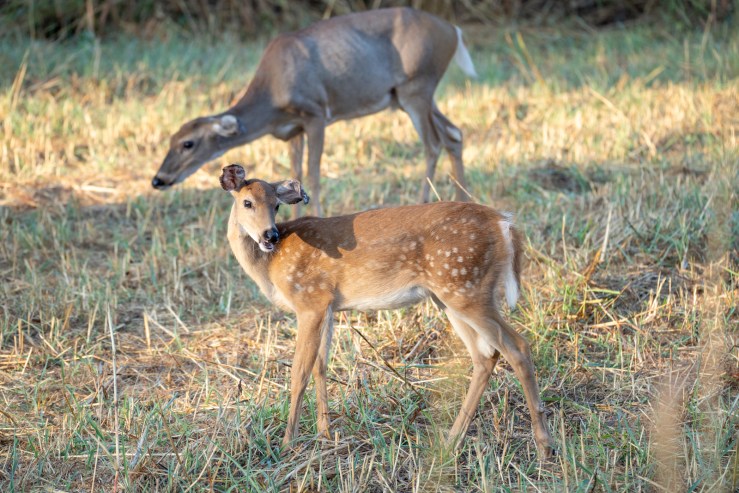
The Tamron 70-300mm f/4.5-6.3 Di III RXD is weather resistent, so don’t be scared of the water.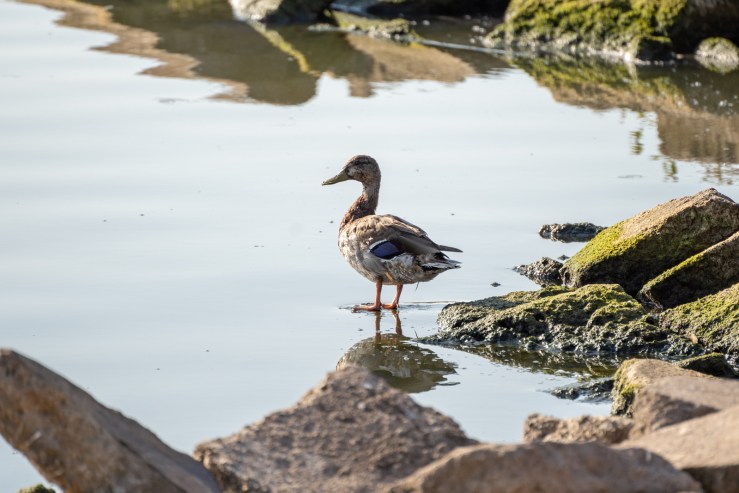
This lens focuses quickly even in low light situations.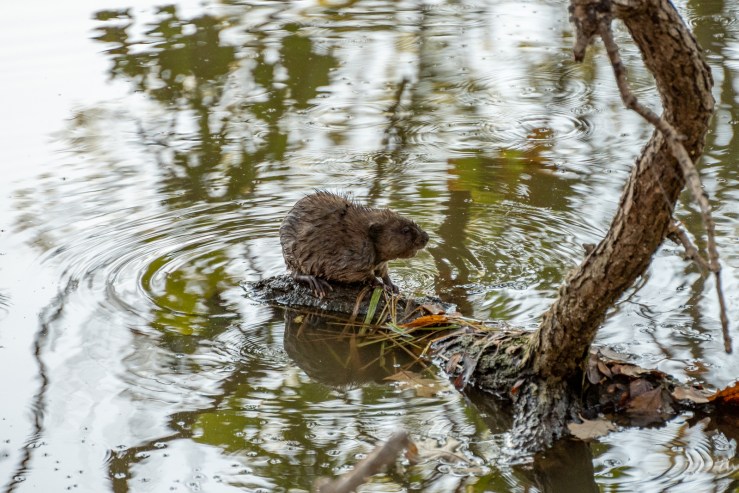
This lens focuses quickly even in low light situations.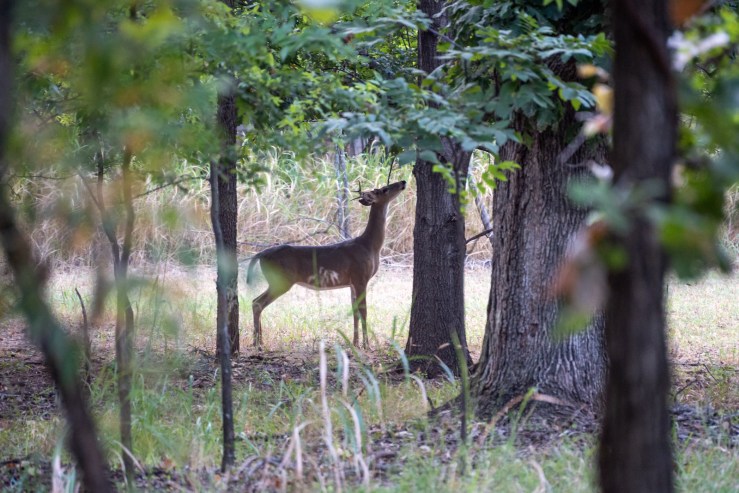
If you think affordable lenses aren’t sharp, think again. The Tamron 70-300mm f/4.5-6.3 Di III RXD is tack sharp.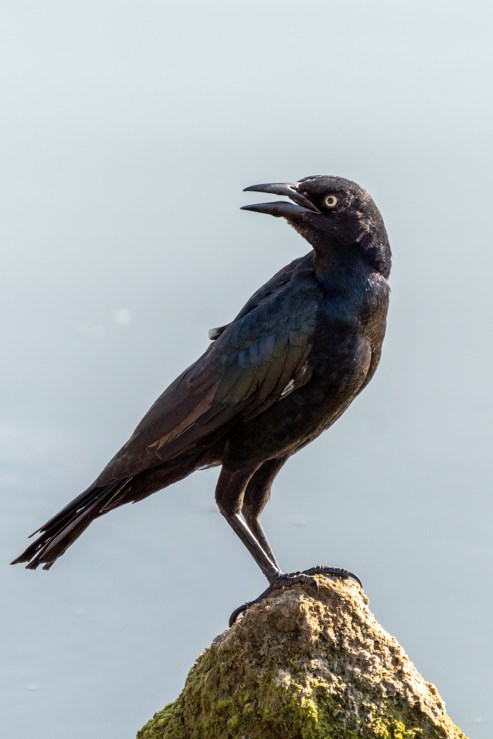
Like many other types of photography, wildlife photography is much easier at certain times of the day. Both the early morning and late evening hours are the best. In the early morning and the evening, wildlife is at its most active as the animals look for their first and last meals of the day. This is perfect for us as photographers. It means we get to make the most of gorgeous golden hour light when we create our wildlife images.
The aperture range of f/4.5-6.3 on the Tamron 70-300mm is more than enough to make the most of the light at these times of the day. The Sony a7 III and other Sony mirrorless cameras perform well in low-light situations. So, you’ll have no issues getting the shots you want. If you can, wait for your subject to walk or fly into rays of sunlight that are breaking through the trees to make your images even more compelling.
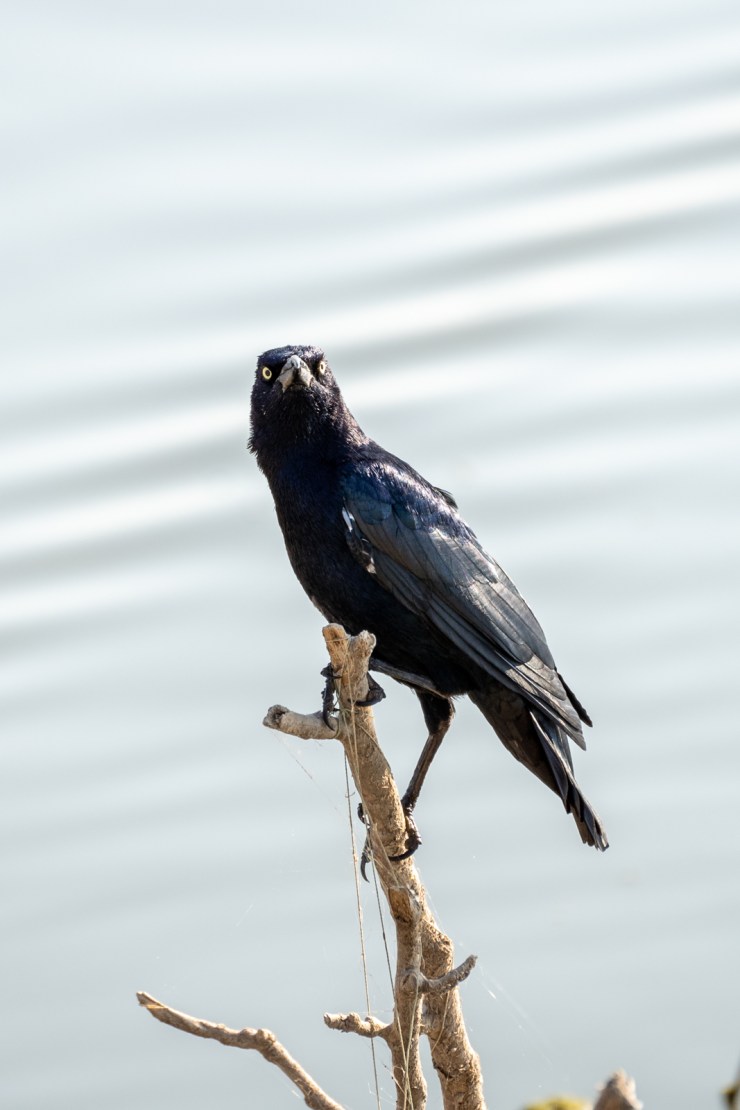
As you can see in the wildlife images above, the Tamron 70-300mm f/4.5-6.3 Di III RXD is very sharp. There are no issues with chromatic aberrations, fringing, or vignetting either. It’s seriously impressive for a lens that costs less than $550!
Choose the correct settings for wildlife photography
.mgl-tiles { display: none; } #mgl-gallery-634ee4ccc4ea1 { margin: -5px; width: calc(100% + 10px); } #mgl-gallery-634ee4ccc4ea1 .mgl-box { padding: 5px; } @media screen and (max-width: 768px) { #mgl-gallery-634ee4ccc4ea1 { margin: -5px; width: calc(100% + 10px); } #mgl-gallery-634ee4ccc4ea1 .mgl-box { padding: 5px; } } @media screen and (max-width: 460px) { #mgl-gallery-634ee4ccc4ea1 { margin: -5px; width: calc(100% + 10px); } #mgl-gallery-634ee4ccc4ea1 .mgl-box { padding: 5px; } }
The Tamron 70-300mm f/4.5-6.3 Di III RXD locked on to this dove quickly,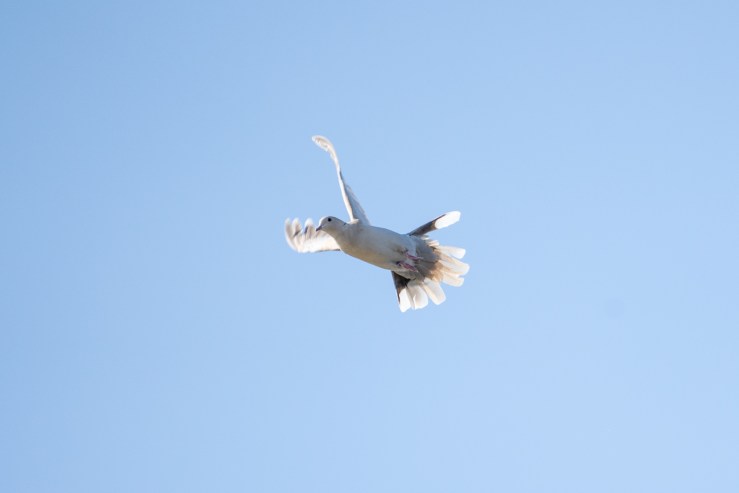
Capturing running deer, swimming ducks, and birds in flight is easy with this lens.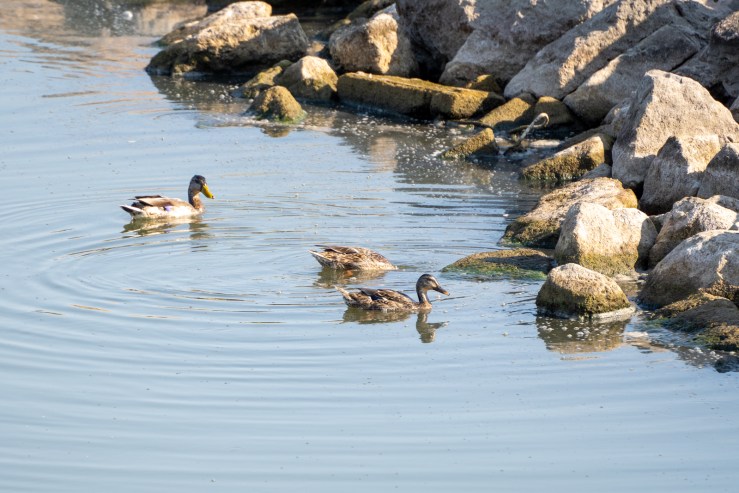
The Tamron 70-300mm f/4.5-6.3 Di III RXD renders beautiful colors.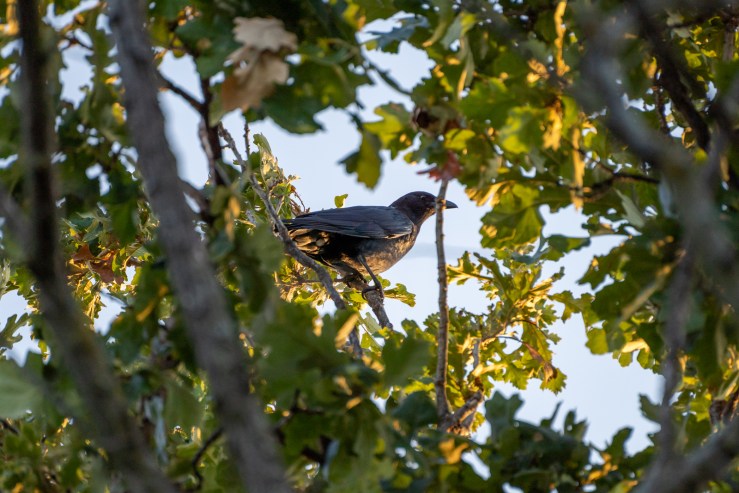
Manually focusing this lens from Tamron is easy.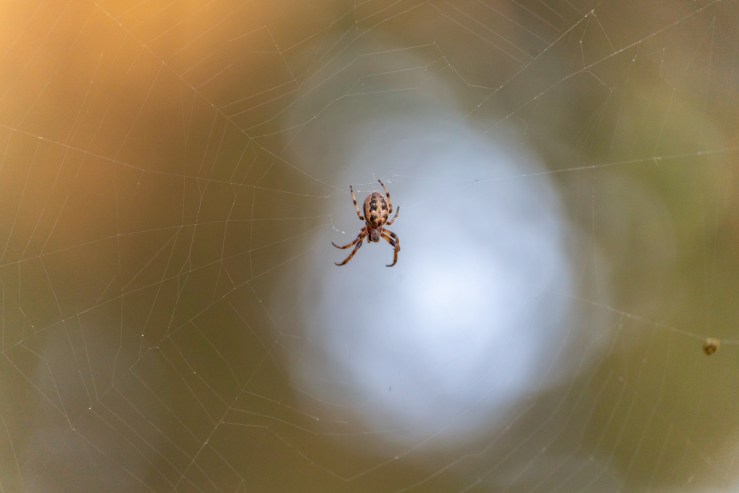
Birds in flight are no problem for the Tamron 70-300mm f/4.5-6.3 Di III RXD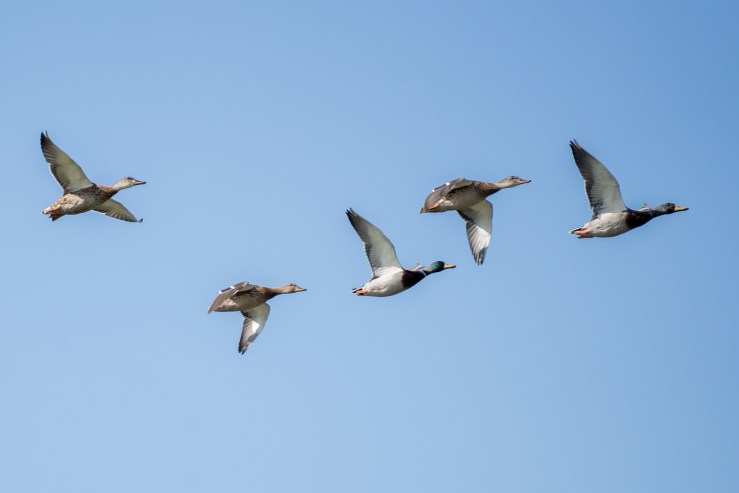
I was pleasantly surprised to find that the affordable Tamron 70-300mm f/4.5-6.3 Di III RXD has been engineered to make the most of the blazing-fast Sony AF system. I was easily able to capture birds in flight, ducks swimming, and whitetail deer running around in fields.
There are, of course, a few different autofocus settings that you should be aware of. For birds in flight, I find that setting Sony cameras to a wide area and AF-C usually yields the best results for things like birds in flight or when I’m trying to capture large animals like deer.
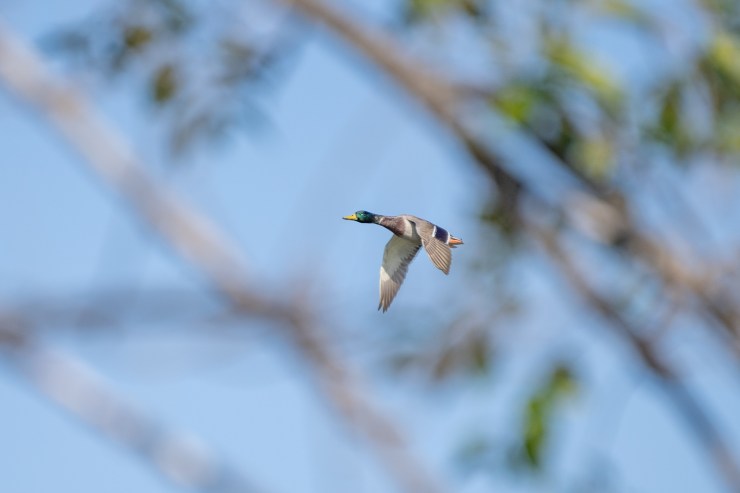
For birds in trees and smaller insects, I find it easier to use a single focusing point or I manually focus. Fortunately, the manual focus ring on the Tamron 70-300mm is easy to use. I was quickly able to manually focus when the camera wanted to focus on the branches of a tree and when it couldn’t find a spider in its web, for example.
Don’t be afraid of using high ISOs
.mgl-tiles { display: none; } #mgl-gallery-634ee4ccc6368 { margin: -5px; width: calc(100% + 10px); } #mgl-gallery-634ee4ccc6368 .mgl-box { padding: 5px; } @media screen and (max-width: 768px) { #mgl-gallery-634ee4ccc6368 { margin: -5px; width: calc(100% + 10px); } #mgl-gallery-634ee4ccc6368 .mgl-box { padding: 5px; } } @media screen and (max-width: 460px) { #mgl-gallery-634ee4ccc6368 { margin: -5px; width: calc(100% + 10px); } #mgl-gallery-634ee4ccc6368 .mgl-box { padding: 5px; } }
Modern cameras let you push your ISOs without any major issues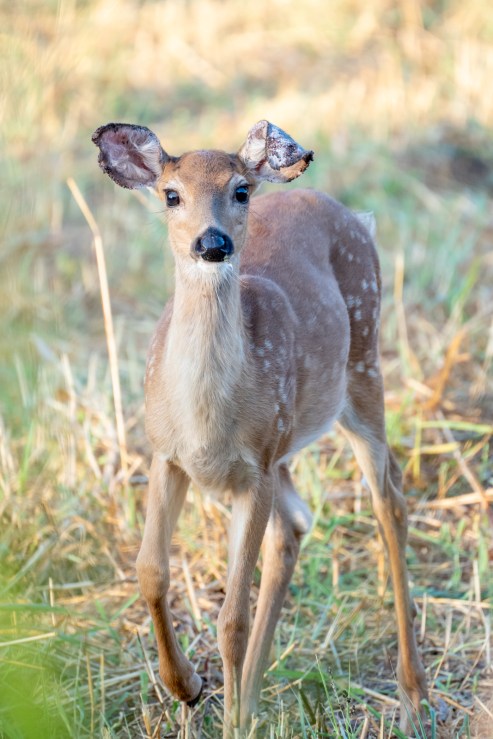
The Tamron 70-300mm f/4.5-6.3 Di III RXD is very easy to manually focus.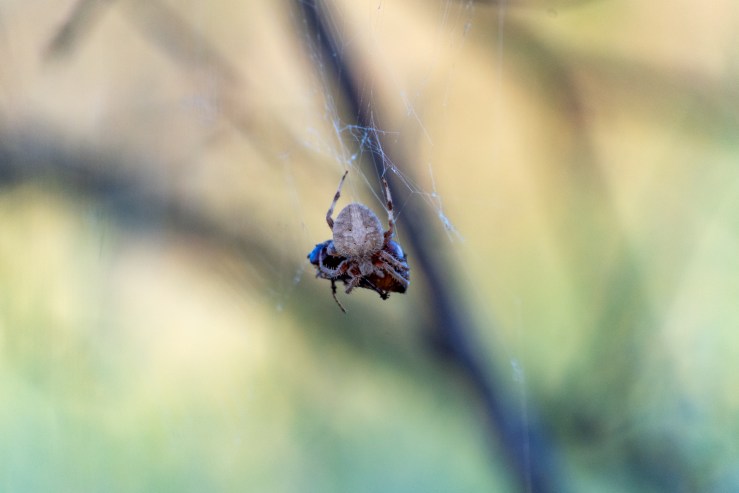
Modern cameras let you push your ISOs without any major issues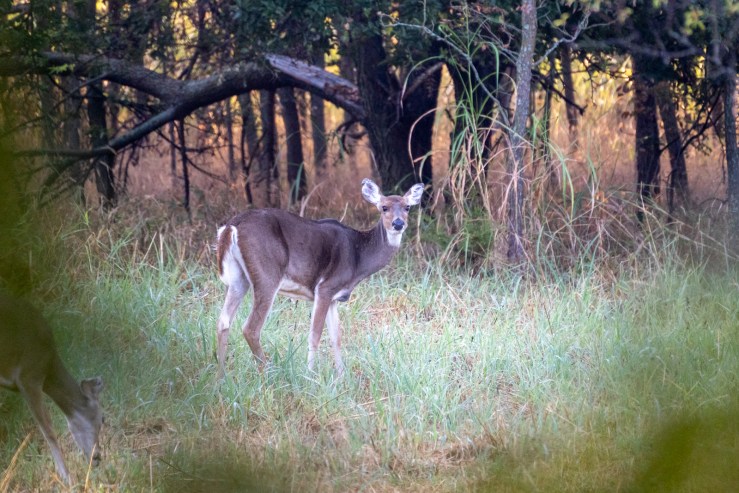
As you can see, the Tamron 70-300mm is very sharp.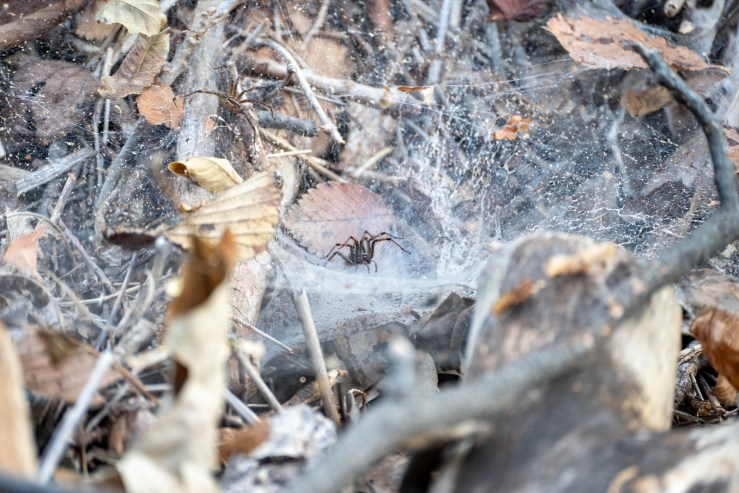
When it comes to the shutter speeds, ISO and apertures, these can all vary depending on what you’re trying to capture. Birds in flight can require shutter speeds of 1/2500s depending on the bird. You might want to be more creative to show motion in the wings, which would mean choosing a slower shutter speed.
In regards to aperture, you’re going to want to stop down to f/6.3 or lower. This way, you can ensure that the majority of animal is in focus. This is another reason why the aperture range of f/4.5-6.3 on the Tamron 70-300mm Di III RXD is more than enough.

One thing I can say for sure is don’t be afraid to bump up your ISO. For lots of wildlife images, you’re going to need fast shutter speeds. In low light, this means high ISOs. Even for stationary or slow-moving critters, depending on the available light, you might have to crank the ISO as well. All of the images above were shot between ISOs 800 and 2500 and they look just fine. Even if you have to go higher, modern editing software is now so good that you can eliminate noise and keep detail levels high.
The Tamron 70-300mm Di III RXD is versatile
.mgl-tiles { display: none; } #mgl-gallery-634ee4ccc7420 { margin: -5px; width: calc(100% + 10px); } #mgl-gallery-634ee4ccc7420 .mgl-box { padding: 5px; } @media screen and (max-width: 768px) { #mgl-gallery-634ee4ccc7420 { margin: -5px; width: calc(100% + 10px); } #mgl-gallery-634ee4ccc7420 .mgl-box { padding: 5px; } } @media screen and (max-width: 460px) { #mgl-gallery-634ee4ccc7420 { margin: -5px; width: calc(100% + 10px); } #mgl-gallery-634ee4ccc7420 .mgl-box { padding: 5px; } }
The Tamron 70-300mm is lightweight, whcih makes is a joy to carry around on long photo walks.
The Tamron 70-300mm f/4.5-6.3 Di III RXD is very sharp.
Birds in flight are no problem for the Tamron 70-300mm f/4.5-6.3 Di III RXD
The Tamron 70-300mm f/4.5-6.3 Di III RXD is great for landscape photography too.
Birds in flight are no problem for the Tamron 70-300mm f/4.5-6.3 Di III RXD
When I go on wildlife photo walks and hikes, I like to keep things light. As mentioned above, the Tamron 70-300mm f/4.5-6.3 Di III RXD weighs just 1.2lbs. In fact, it’s among the lightest 300mm capable telephoto lenses for full-frame cameras. The Tamron 70-300mm also features a weather-resistant design. There are five seals throughout the body and one at the mount. You can take this lens into inclement weather and you’ll be able to create beautiful wildlife images easily.

The lens is great for wildlife photography, however, it can also be used for landscape photography and even documentary photography. It’s a lightweight, compact lens that will just let you create. It’s sharp, it produces nice colors, there are no issues with aberrations, it focuses rapidly, and it’s easy to use. On Sony APS-C cameras you can get even more reach out of it too (105mm-450mm equivalent). This is a lens that will bring the joys of wildlife photography to many thanks to its price point too.
If you’d like to add the Tamron 70-300mm f/4.5-6.3 Di III RXD to your collection so you can create beautiful wildlife images, not break your back, or your bank, or if you’d like more information about it, head on over to the official Tamron website.
This post is sponsored by Tamron. While this is a sponsored post, all of the thoughts and views expressed in this article are those of the author. We tell you this as we always want to be upfront and honest with you, our loyal readers.
Tamron 70-300mm f/4.5-6.3 Di III RXD
Compact, lightweight, sharp and fast focusing, the Tamron 70-300mm f/4.5-6.3 Di III RXD is the perfect lens for photographers who want to jump into wildlife photography without breaking the bank. This telephoto zoom is equally comfortable capturing landscapes and many other genres of photography as well. Its six points of weather sealing also make it ideal for creating images in harsh conditions.
See pricing and availability

Tell your story with the second annual Visual Storytelling Conference!
Experience four days of interactive, online training sessions featuring a range of educational content with experienced photographers and content creators. This free event kicks off with a series of technical boot camps to build essential skills, followed by live, online sessions on photography, video, business and social media. Join live from March 10-13, 2022!
